Lifting clutch failures
Issued: 30/10/2019
Last Updated: 21/06/2021
Purpose
The purpose of this health and safety alert is to inform workers, employers, builders and designers of the risk of failure of lifting clutches associated with tilt-up and pre-cast concrete erection.
Background
There have been two failures of lifting clutches in Queensland within 20 months.
In May 2021, the anchor engagement pin on a plate type lifting clutch broke during an attempt to rotate a 14.8 tonne pre-cast concrete panel using a 100 tonne and 80 tonne mobile crane. It appears the clutch pin failed when the panel was at approximately 45 degrees. Although the pin broke totally in two, the panel did not drop due to the geometry of the lifting clutch, and how it was being loaded at the time. However, the break had the potential for the pre-cast panel to drop to the ground, especially if the orientation of the lifting clutch was different. In this incident the lifting clutch was brand new with only a few lifts being done with the clutch that day. Documentation stating the lifting clutch had been provided with a proof test of twice its working load limit, before being sold, was available on site. The clutch was marked with “7 T WLL”. Photograph 1 shows the lifting clutch, Photograph 2 shows the broken anchor engagement pin and Photograph 3 shows a cross sectional view of the failed pin.
In October 2019, the lifting clutch link on a 5-tonne lifting clutch failed when a 100-tonne crawler crane was lifting a 16-tonne concrete wall panel. In this incident the lifting clutch was the type used on ‘mushroom’ head lifting inserts. The panel was rigged with four face lifting inserts (lifters) at the time with equalising sheaves each fitted between two inserts. When the lifting clutch link broke, it caused two of the lifting points to become ineffective and the panel dropped onto the casting stack below (refer Photograph 6). Although no workers were injured, the incident caused extensive damage to the panel and had the potential to cause serious injuries.
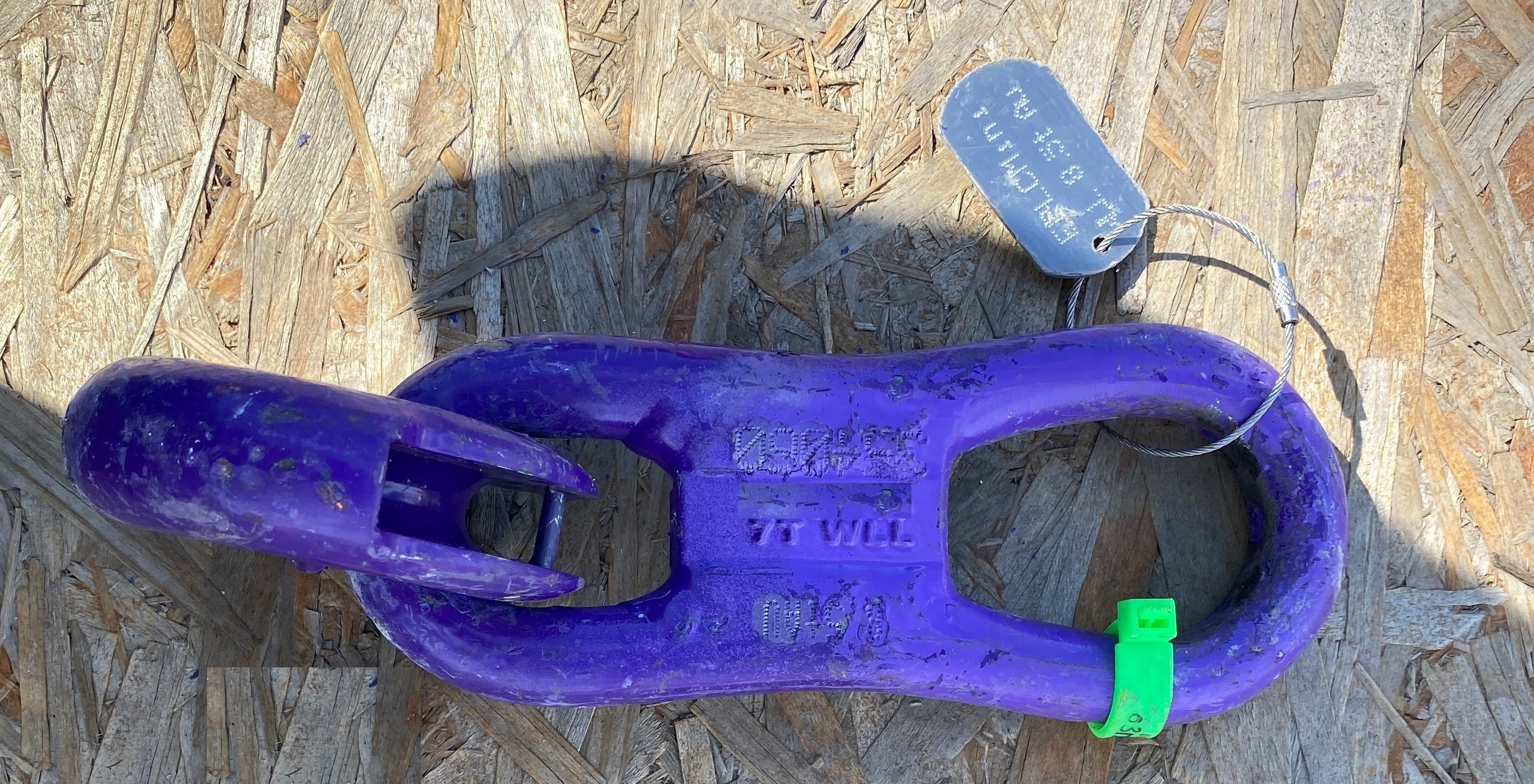
Photograph 1: View of plate type lifting clutch involved in May 2021 incident.
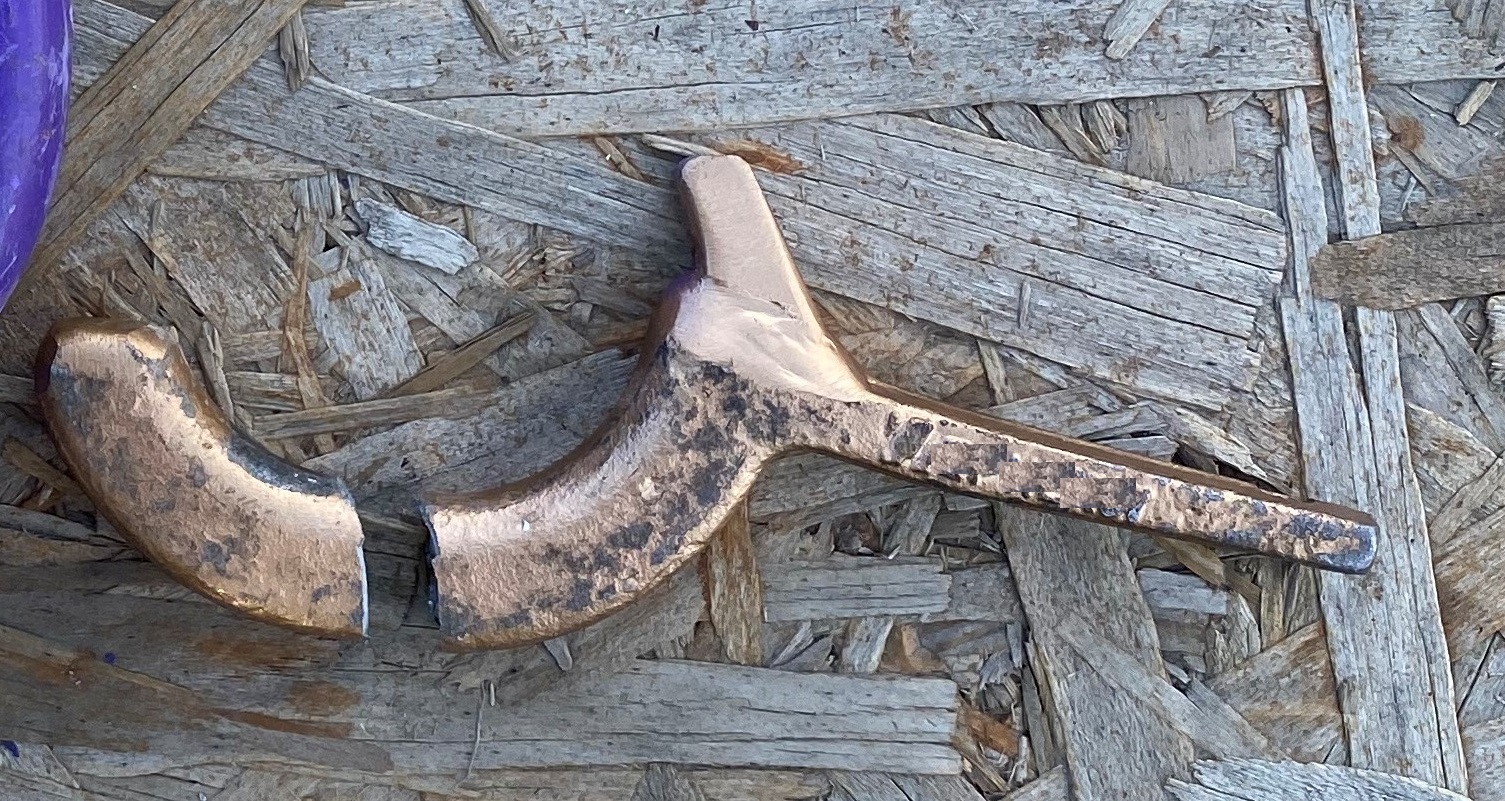 Photograph 2: View of failed engagement pin. | 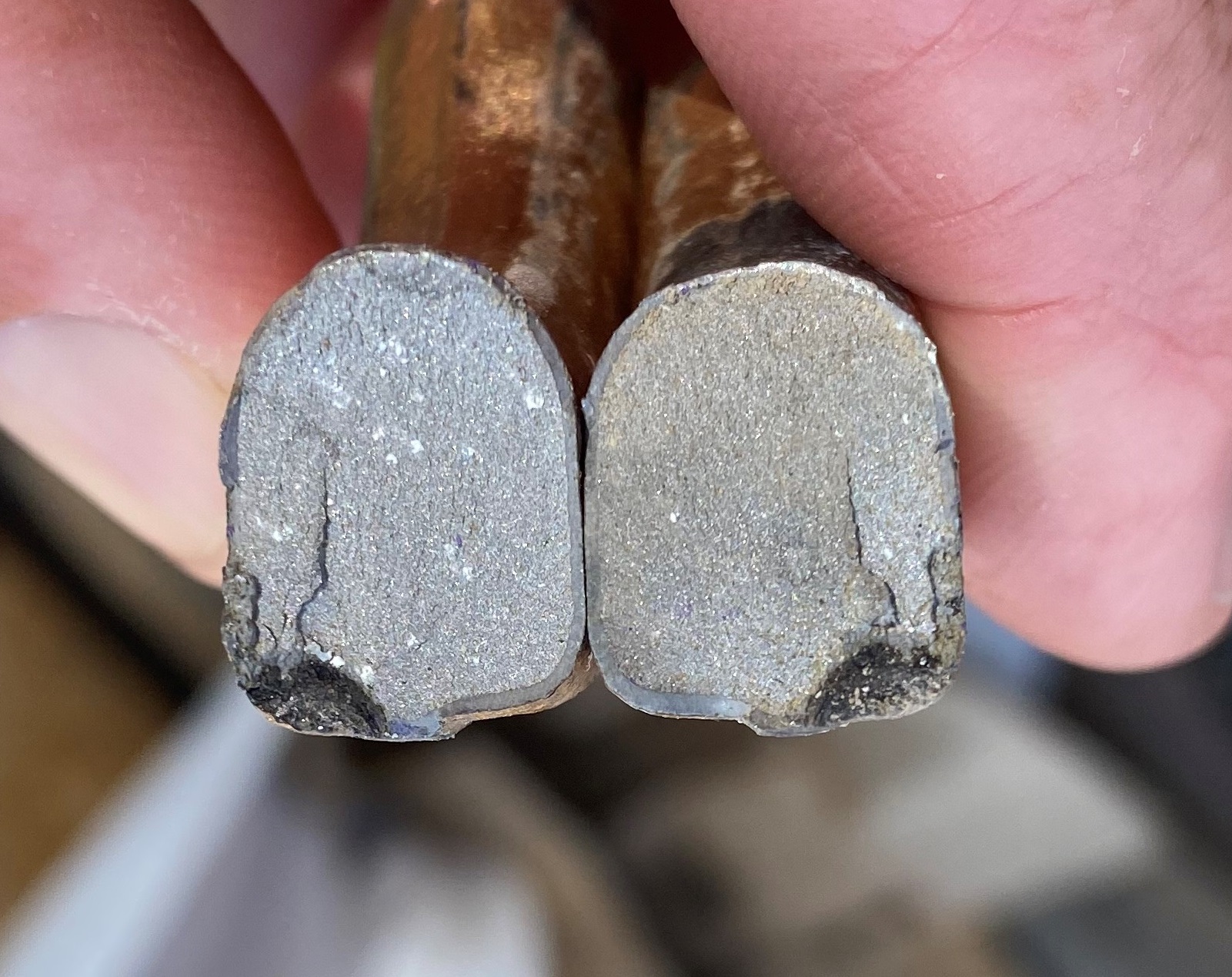 Photograph 3: Cross sectional view of engagement pin. |
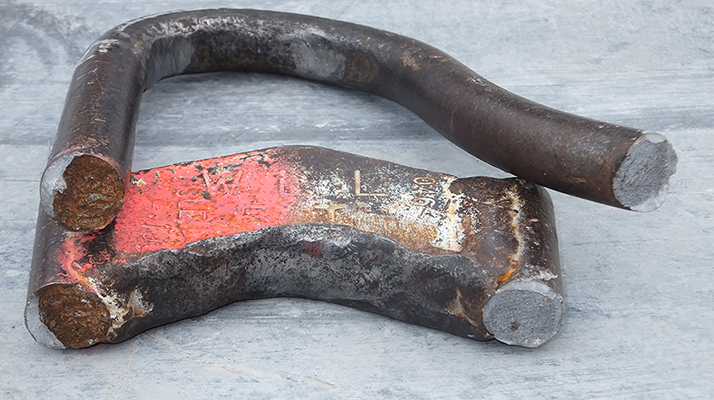
Photograph 4: Failed clutch link form 2019 incident showing pre-existing crack.
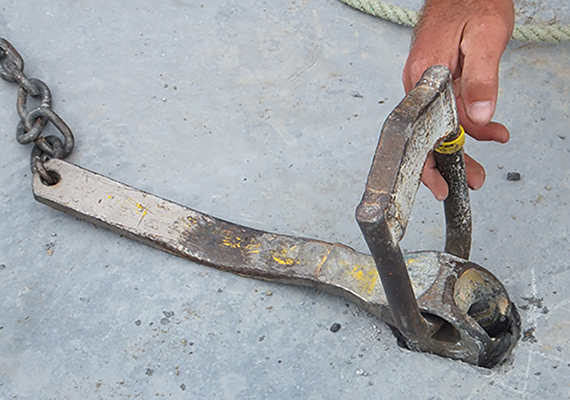 Photograph 5: View of an undamaged lifting clutch installed on a ‘mushroom’ head type lifting insert . | 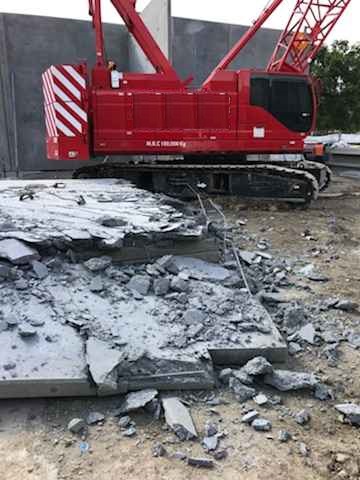 Photograph 6: Dropped 16-tonne panel. |
Contributing factors
In the latest incident, the cause of the incident is not known at this stage. However, the fact that the lifting clutch was brand new at the time of the incident is a concern. It appears that the completion of a proof test on the clutch before being supplied was no guarantee that failure would not occur.
In the 2019 incident, it appears the primary cause of the lifting clutch link failure was that it had a substantial, undetected crack through its cross-section. Rust on the failure surface indicates that the crack may have been present for some time (refer Photograph 4). The crack was close to a weld and started on the inside of the lifting clutch link, so it may have been difficult to notice the crack by visual inspection. The lifting clutch link was inspected and proof tested by a third-party lifting gear organisation six months prior to the incident. The lifting clutch involved in this incident had been hired to the panel erector.
Action required
Both incidents had potential for loss of life and damage to cranes. The second incident highlights the serious consequences of lifting gear element failure. Although the second incident occurred on a tilt-up site, the same type of lifting clutch is also commonly used for pre-cast element erection. These incidents are both a reminder of the need for a back-up lifting system for the lifting of pre-cast elements as highlighted in Section 13.2 of the Tilt-up and pre-cast construction Code of Practice 2003.
In the latest incident the lifting clutch was brand new. In the earlier incident, the lifting clutch had been supplied by a company that specialises in gear associated with the erection of concrete elements and has a quality assurance program. The lifting gear was not owned by the company employing the crane and rigging crew.
A rigorous inspection and testing program is needed on lifting clutches, possibly beyond the current minimum industry benchmarks. Australian Standard AS3850.1:2015 Prefabricated concrete elements: Part 1 General requirements specifies non-destructive testing (NDT) of cast components of lifting clutches at manufacture, but does not specify any NDT during the 12-monthly inspection. Therefore to help prevent unexpected failures, consider carrying out NDT to inspect for cracks at the 12-monthly inspection. The inspection should include dimensional checking to determine that tolerances remain within the manufacturer's specifications.
Inspection records should be maintained for every lifting clutch and the records should include the:
- identification number of each clutch assembly
- inspection organisation carrying out the 12-monthly inspection
- name of the competent person carrying out the inspection
- inspection method used (including the NDT method if used)
- results of the inspection (e.g. pass/fail).
The rigging crew erecting concrete elements should carry out a detailed visual inspection of the lifting gear prior to use.
Further information
Further information on the erection of tilt-up and pre-cast concrete elements: